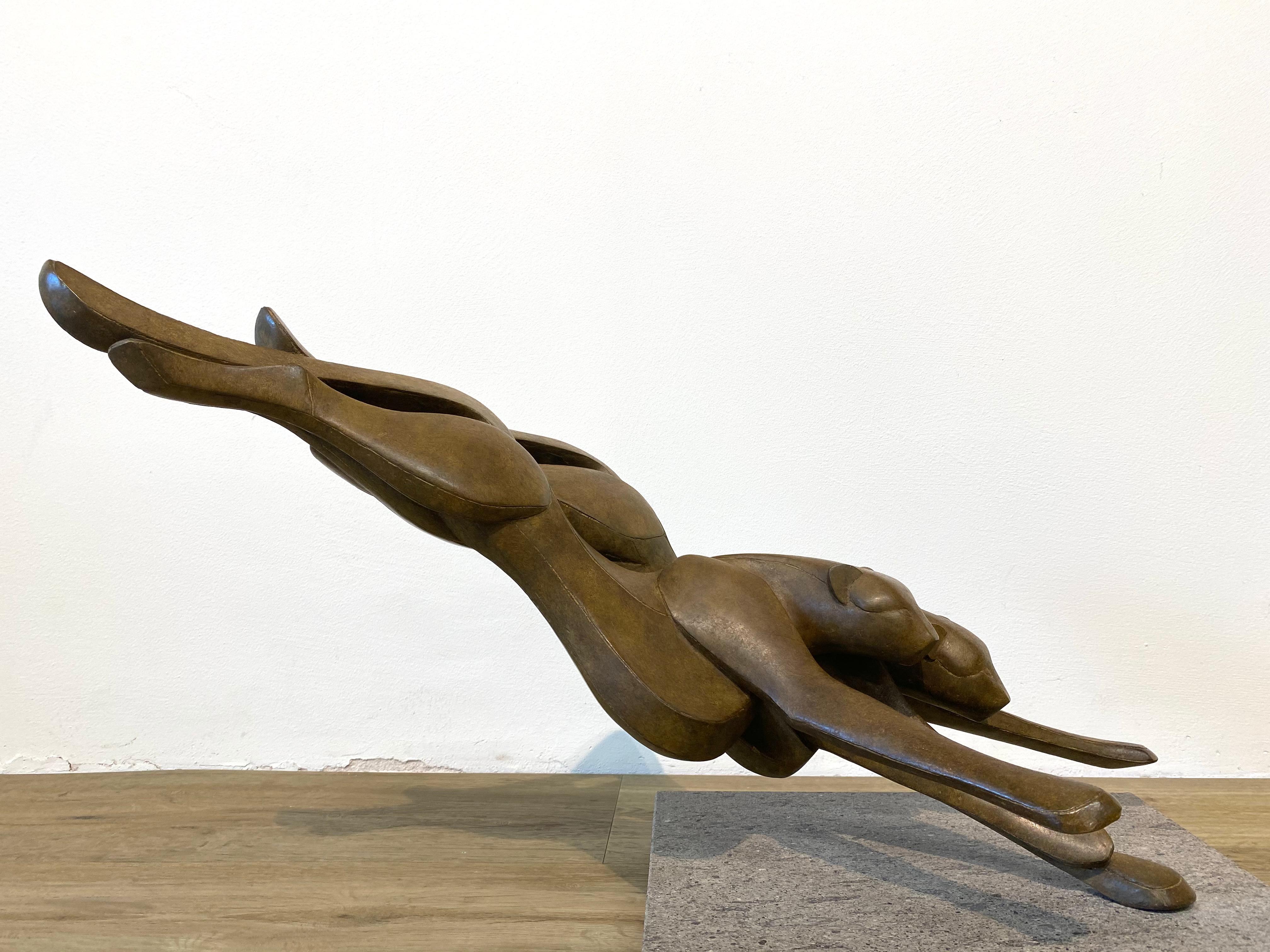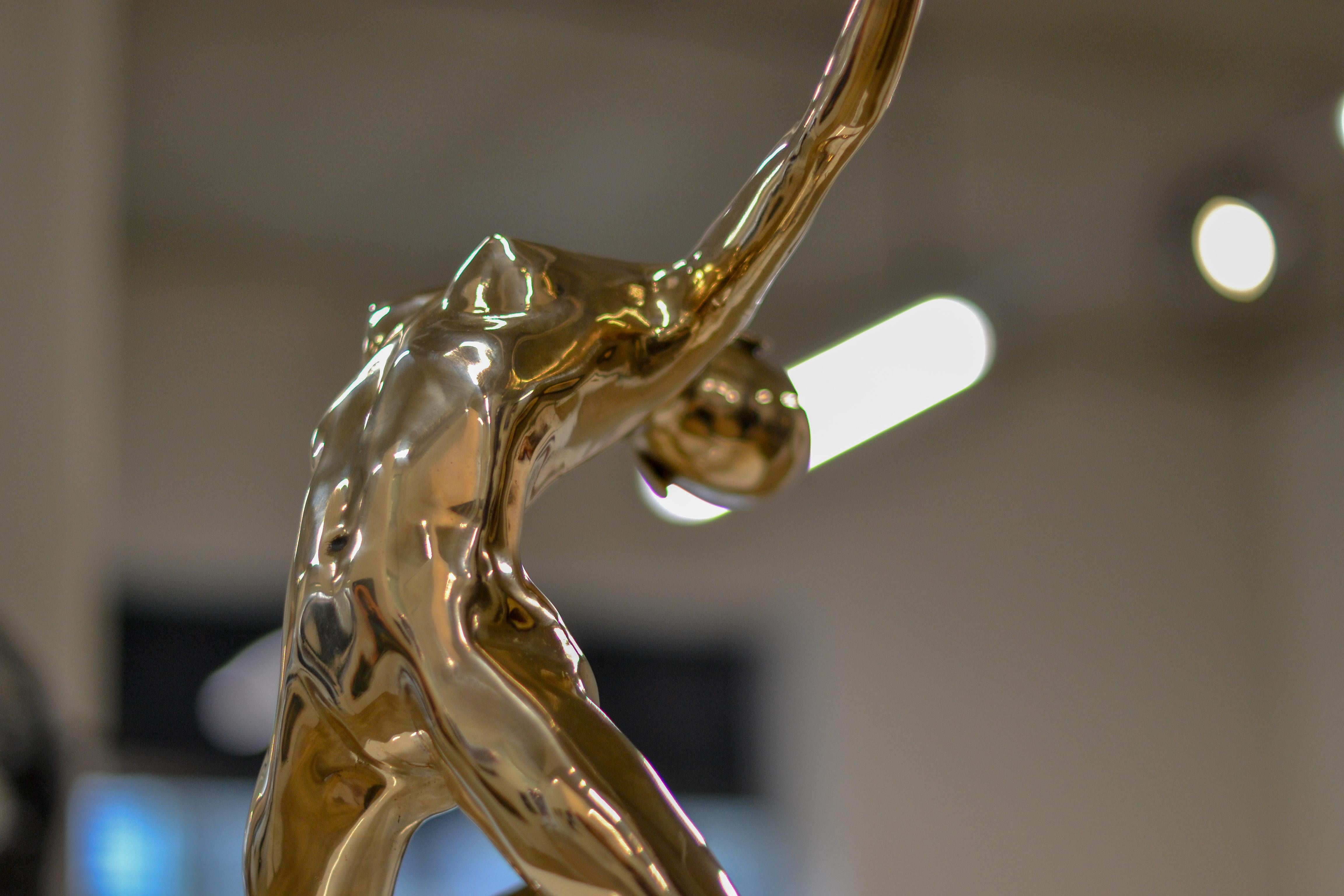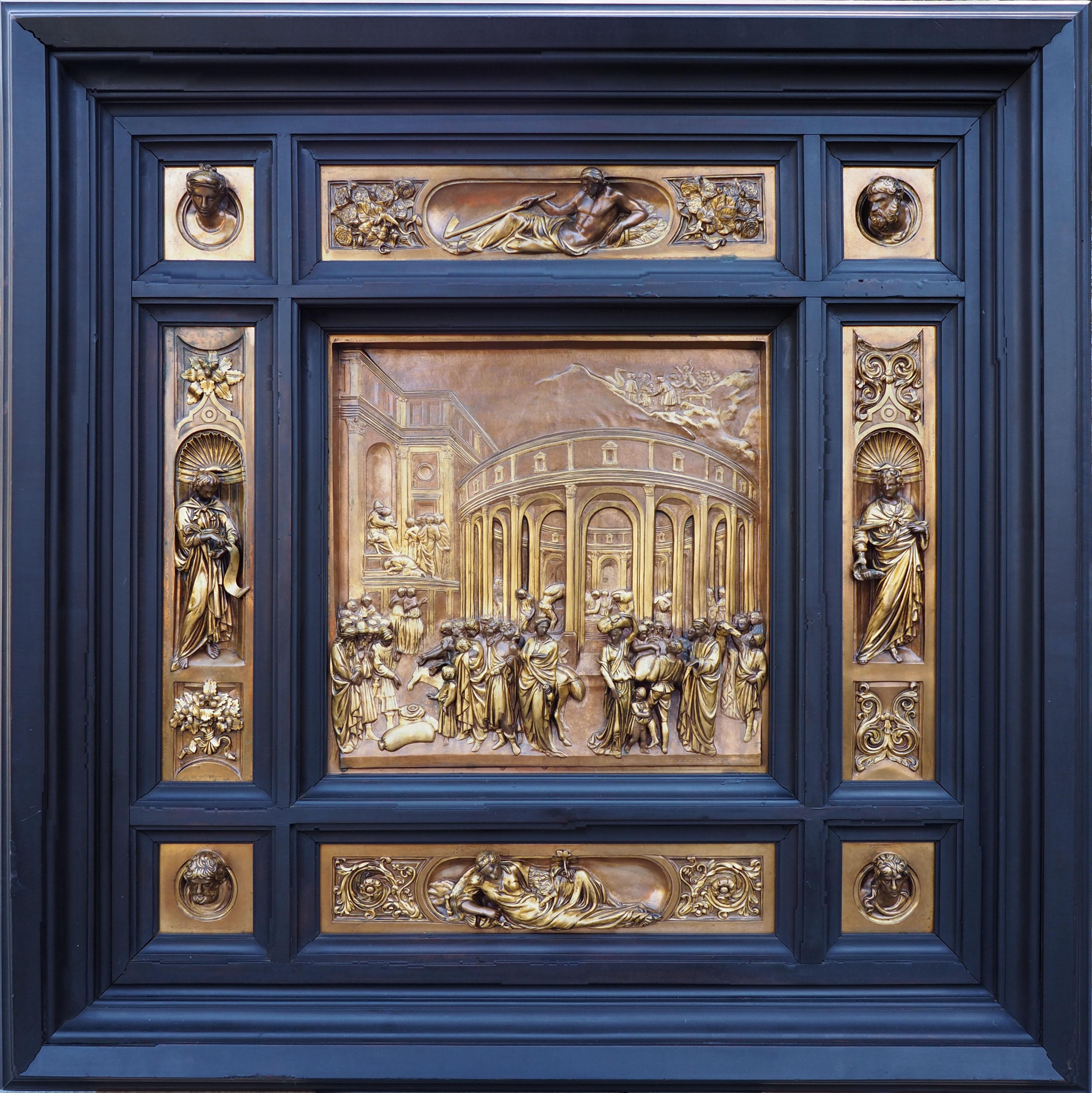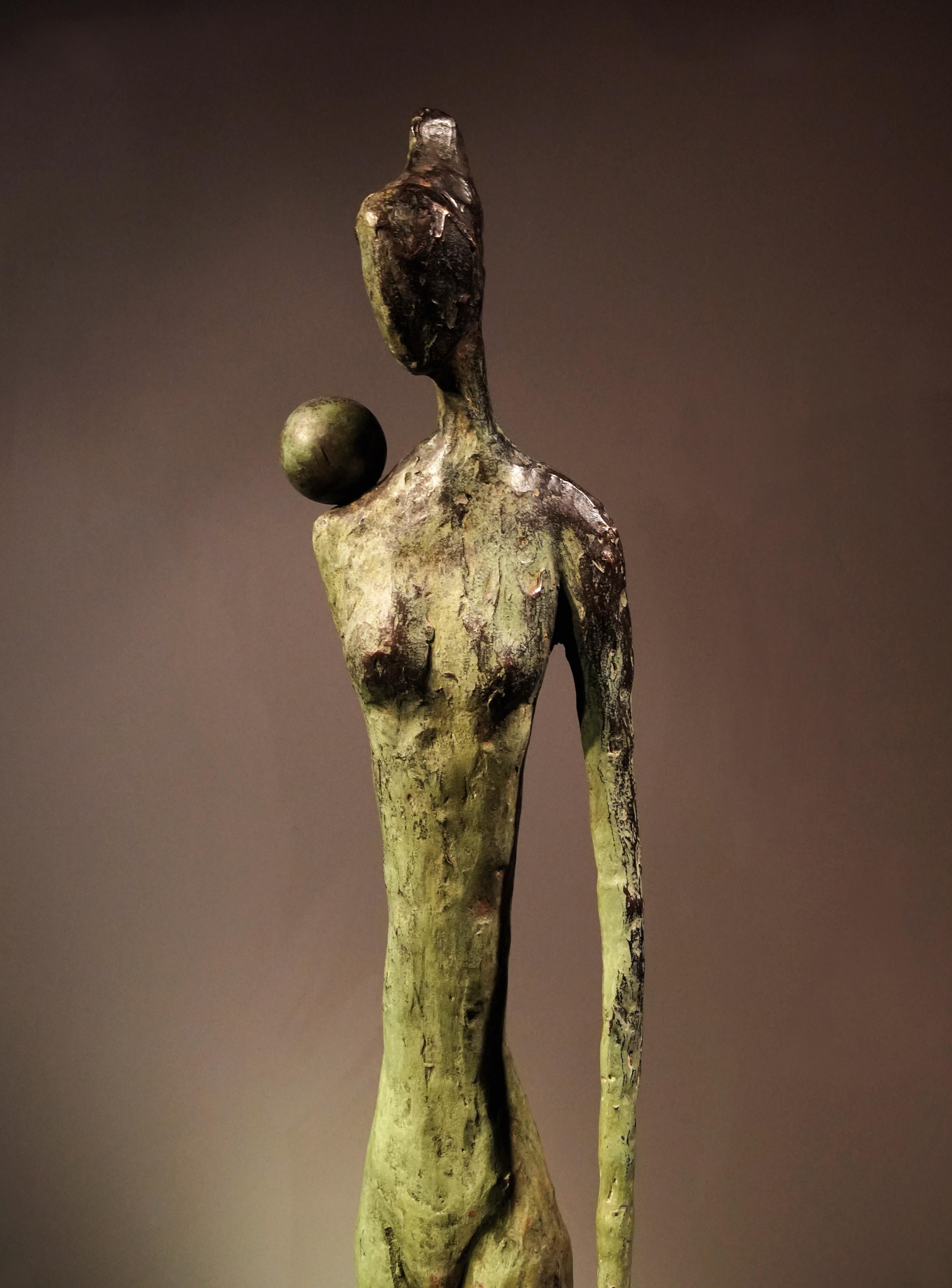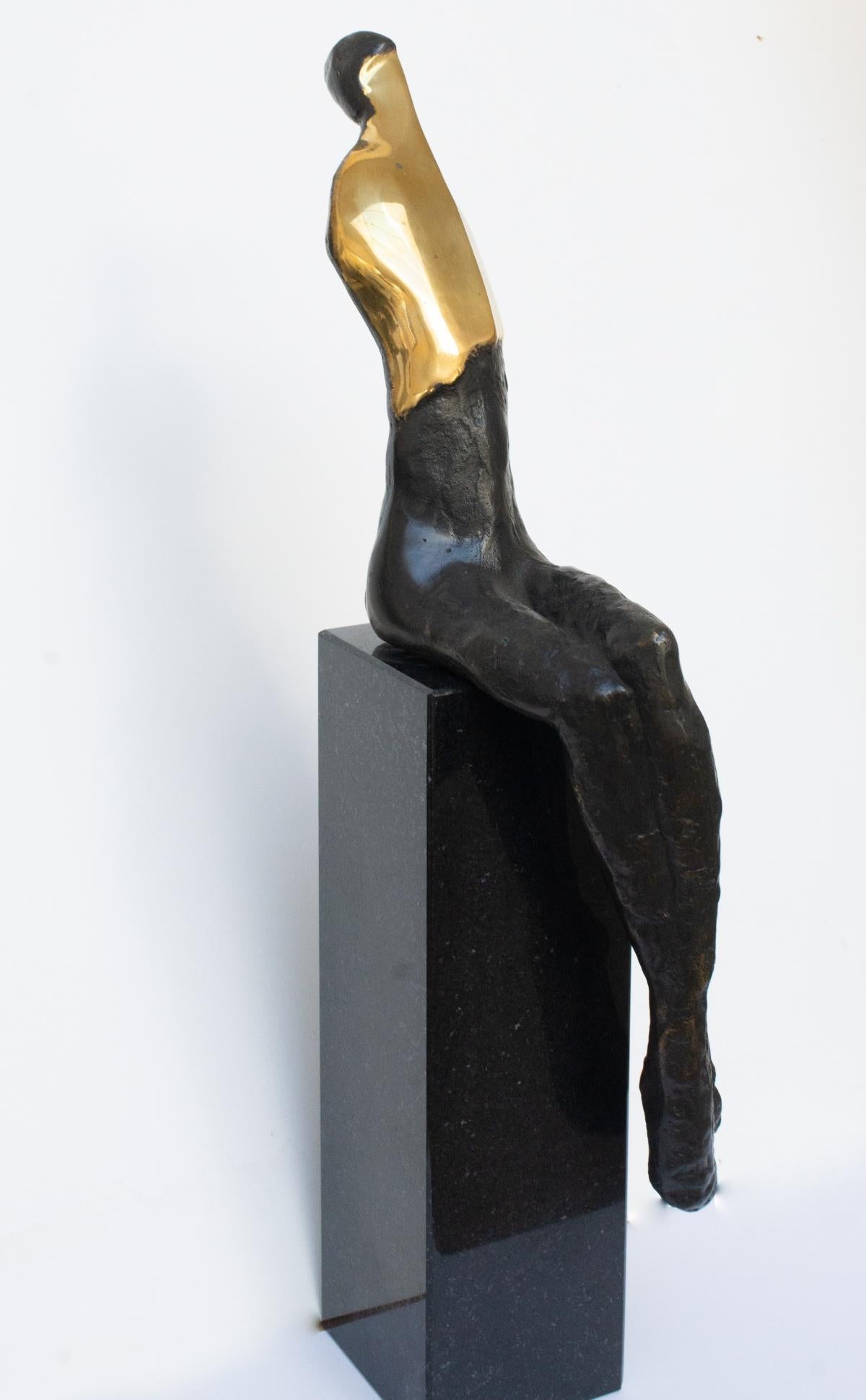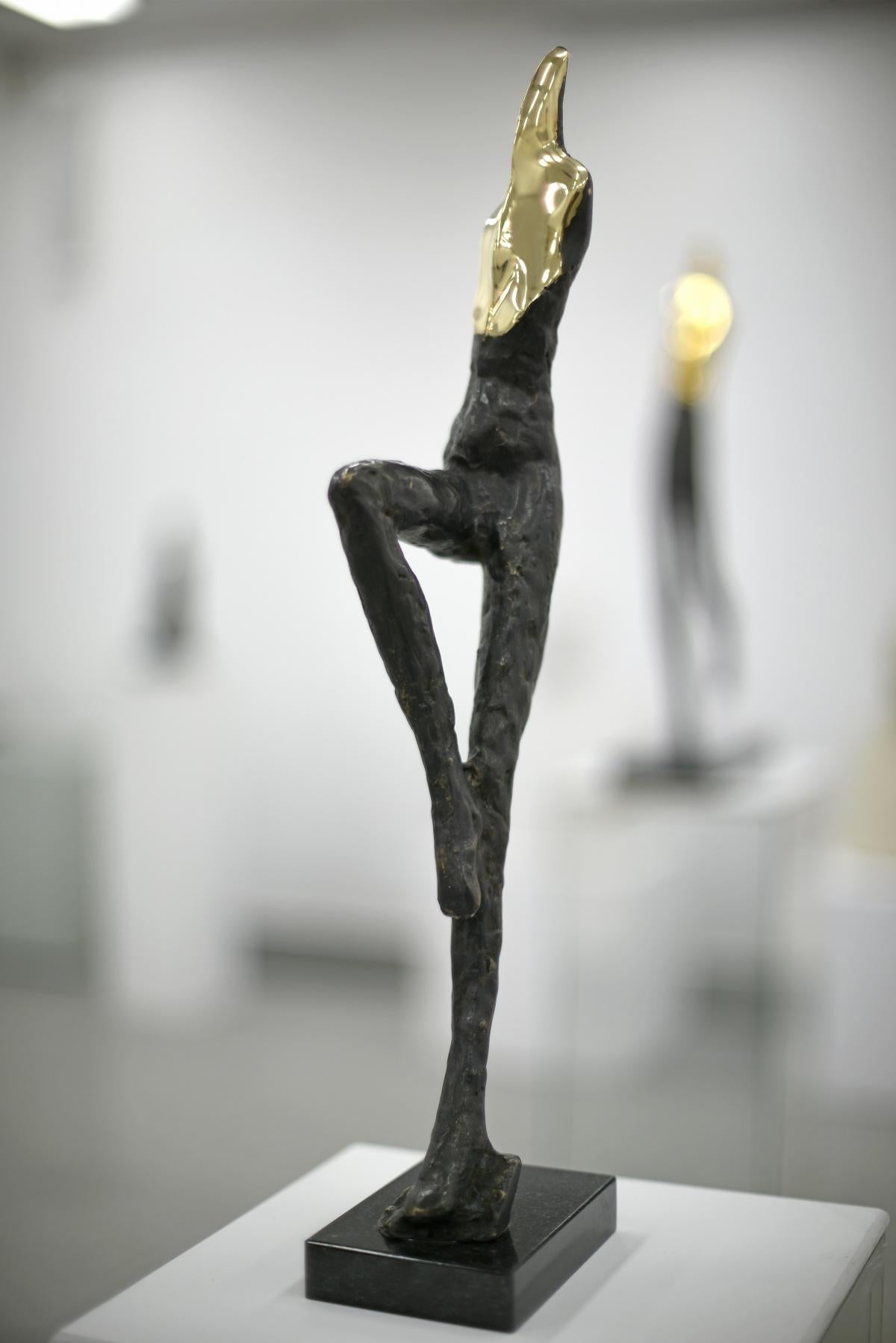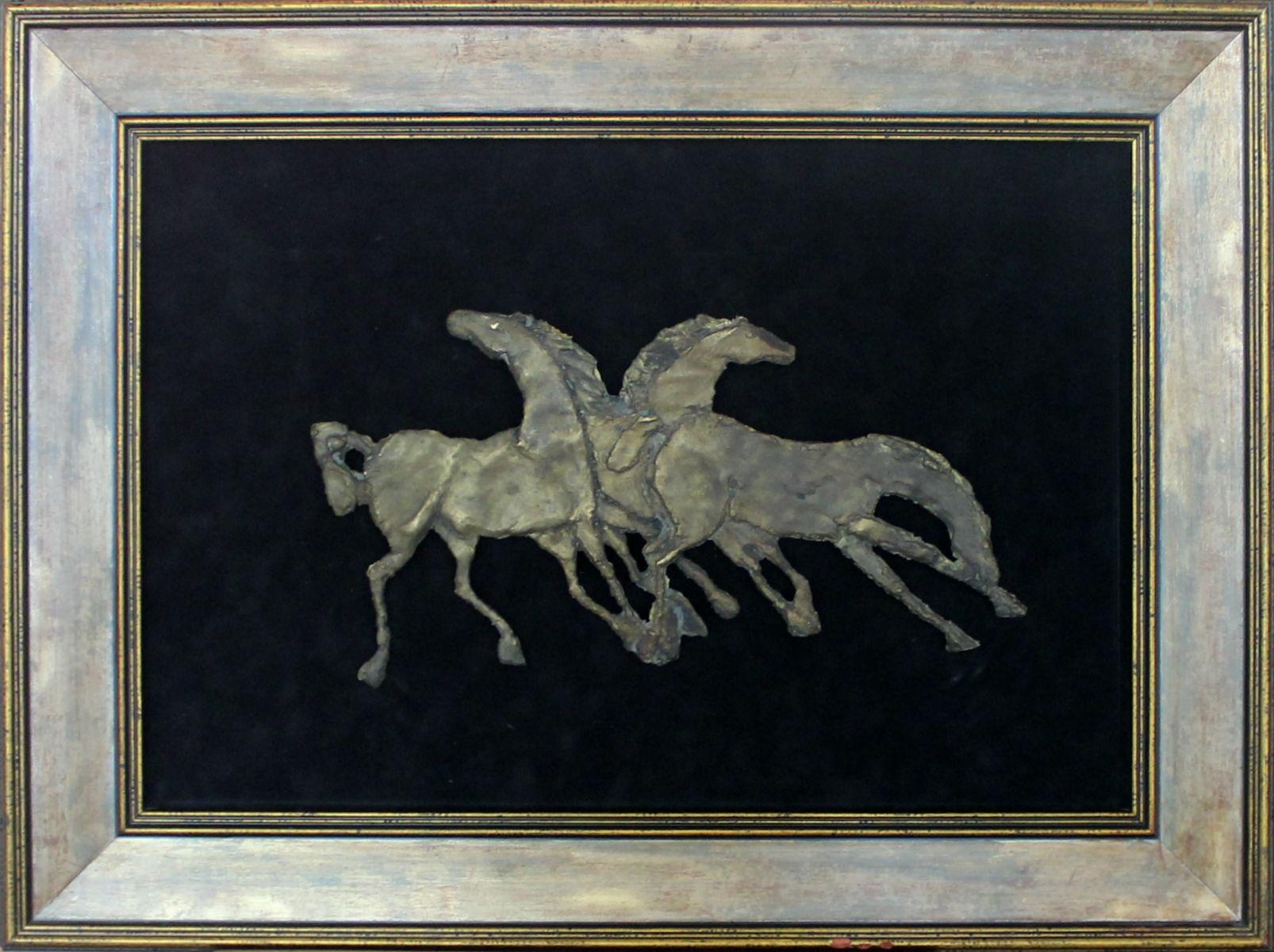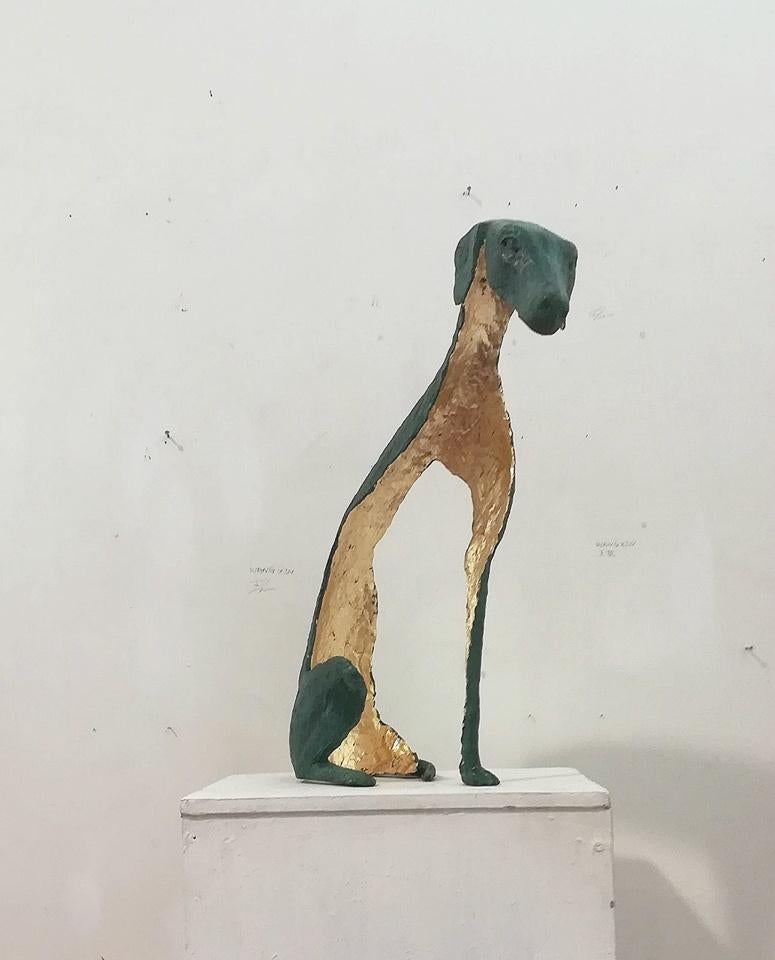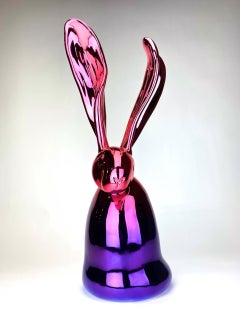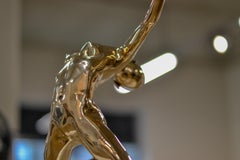
Orpheus
View Similar Items
Want more images or videos?
Request additional images or videos from the seller
1 of 2
Gustavo TorresOrpheus2013
2013
About the Item
- Creator:Gustavo Torres (1967, Mexican)
- Creation Year:2013
- Dimensions:Height: 27 in (68.58 cm)Width: 4 in (10.16 cm)
- Medium:
- Period:
- Condition:
- Gallery Location:Fort Lauderdale, FL
- Reference Number:Seller: 283491stDibs: LU57436010822

About the Seller
5.0
Vetted Seller
These experienced sellers undergo a comprehensive evaluation by our team of in-house experts.
Established in 1998
1stDibs seller since 2017
22 sales on 1stDibs
Typical response time: 14 hours
More From This SellerView All
- AloneBy Gustavo TorresLocated in Fort Lauderdale, FLBronze SculptureCategory
2010s Contemporary Figurative Sculptures
MaterialsBronze
Price Upon Request - CXLXIBy Jedd NovattLocated in Fort Lauderdale, FLJedd Novatt (b. 1958) CXLXI, 2001 Bronze with brown/black patina18 x 18 x 16 in (45.72 x 45.72 x 40.64 cm)Category
Early 2000s Contemporary Sculptures
MaterialsBronze
Price Upon Request - ThompsonBy Hunt SlonemLocated in Fort Lauderdale, FLInspired by nature and his 60 pet birds, Hunt Slonem is renowned for his distinct neo-expressionist style. He is best known for his series of bunnies, butterflies and tropical birds, as well as his large-scale sculptures and restorations of forgotten historic homes. Slonem’s works can be found in the permanent collections of 250 museums around the world, including the Solomon R. Guggenheim Museum, the Metropolitan Museum of Art in New York City, the Whitney, the Miro Foundation and the New Orleans Museum of Art. Since his first solo show at the Fischbach Gallery in 1977, Slonem’s work has been showcased internationally hundreds of times, most recently at the Moscow Museum of Modern Art and the State Russian Museum in St. Petersburg. In 2017 and 2018, he was featured by the National Museum of the Republic of Kazakhstan, the National Gallery in Bulgaria, and in countless galleries across the United States and around the world. His flair and admiration for far-flung destinations has been a staple of his life since childhood. Slonem was born in 1951 in Kittery, Maine, and his father’s position as a Navy officer meant the family moved often during Hunt’s formative years, including extended stays in Hawaii, California and Connecticut. He would continue to seek out travel opportunities throughout his young-adult years, studying abroad in Nicaragua and Mexico; these eye-opening experiences imbued him with an appreciation for tropical landscapes that would influence his unique style. After graduating with a degree in painting and art history from Tulane University in New Orleans, Slonem spent several years in the early 1970s living in Manhattan. It wasn’t until Janet Fish offered him her studio for the summer of 1975 that Slonem was able to fully immerse himself in his work. His pieces began getting exhibited around New York, propelling his reputation and thrusting him into the city’s explosive contemporary arts scene. He received several prestigious grants, including from Montreal’s Elizabeth Greenshields Foundation, the National Endowment for the Arts, and the Cultural Counsel Foundation’s Artist Project, for which he painted an 80-foot mural of the World Trade Center in the late 1970s. He also received an introduction to the Marlborough Gallery, which would represent him for 18 years. Hunt Slonem tends to embrace the ephemeral beauty of nature, a characteristic that brings a nurturing, spiritual effect to his creations. Throughout his extensive career as a New York artist, Slonem has favored the subject of exotic birds, rabbits, and butterflies. Lately, his compositions have consisted of flat spaces with simple forms pushed to the front of the picture plane. The artist creates exotic forms with expressive and highly textural brushstrokes that are full of intense color, loosely inspired by artists of the German Expressionism movement such as Ernst Ludwig and Emil Nolde. Henry Geldzahler, a scholar of Hunt Slonem, notes that of contemporary artists, “he particularly admires the work of Malcolm Morely...Category
2010s Contemporary Sculptures
MaterialsBronze
Price Upon Request - YaseniaBy Hunt SlonemLocated in Fort Lauderdale, FLInspired by nature and his 60 pet birds, Hunt Slonem is renowned for his distinct neo-expressionist style. He is best known for his series of bunnies, butterflies and tropical birds, as well as his large-scale sculptures and restorations of forgotten historic homes. Slonem’s works can be found in the permanent collections of 250 museums around the world, including the Solomon R. Guggenheim Museum, the Metropolitan Museum of Art in New York City, the Whitney, the Miro Foundation and the New Orleans Museum of Art. Since his first solo show at the Fischbach Gallery in 1977, Slonem’s work has been showcased internationally hundreds of times, most recently at the Moscow Museum of Modern Art and the State Russian Museum in St. Petersburg. In 2017 and 2018, he was featured by the National Museum of the Republic of Kazakhstan, the National Gallery in Bulgaria, and in countless galleries across the United States and around the world. His flair and admiration for far-flung destinations has been a staple of his life since childhood. Slonem was born in 1951 in Kittery, Maine, and his father’s position as a Navy officer meant the family moved often during Hunt’s formative years, including extended stays in Hawaii, California and Connecticut. He would continue to seek out travel opportunities throughout his young-adult years, studying abroad in Nicaragua and Mexico; these eye-opening experiences imbued him with an appreciation for tropical landscapes that would influence his unique style. After graduating with a degree in painting and art history from Tulane University in New Orleans, Slonem spent several years in the early 1970s living in Manhattan. It wasn’t until Janet Fish offered him her studio for the summer of 1975 that Slonem was able to fully immerse himself in his work. His pieces began getting exhibited around New York, propelling his reputation and thrusting him into the city’s explosive contemporary arts scene. He received several prestigious grants, including from Montreal’s Elizabeth Greenshields Foundation, the National Endowment for the Arts, and the Cultural Counsel Foundation’s Artist Project, for which he painted an 80-foot mural of the World Trade Center in the late 1970s. He also received an introduction to the Marlborough Gallery, which would represent him for 18 years. Hunt Slonem tends to embrace the ephemeral beauty of nature, a characteristic that brings a nurturing, spiritual effect to his creations. Throughout his extensive career as a New York artist, Slonem has favored the subject of exotic birds, rabbits, and butterflies. Lately, his compositions have consisted of flat spaces with simple forms pushed to the front of the picture plane. The artist creates exotic forms with expressive and highly textural brushstrokes that are full of intense color, loosely inspired by artists of the German Expressionism movement such as Ernst Ludwig and Emil Nolde. Henry Geldzahler, a scholar of Hunt Slonem, notes that of contemporary artists, “he particularly admires the work of Malcolm Morely...Category
2010s Contemporary Sculptures
MaterialsBronze
Price Upon Request - Symbolic Forms of Life IVBy Gustavo TorresLocated in Fort Lauderdale, FLUnique Bronze SculptureCategory
2010s Sculptures
MaterialsBronze
Price Upon Request - AmistadBy Gustavo TorresLocated in Fort Lauderdale, FLBronzeCategory
2010s Contemporary Sculptures
MaterialsBronze
Price Upon Request
You May Also Like
- Out of the Sky- 21st century Bronze sculpture of Cheetah's running, jumping downBy Antoinette BrietLocated in Nuenen, Noord BrabantThis Sculpture is made by Dutch artist Antoinette Briet. Her forms always are an abstraction of movement in the world of animals. In this particular sculpture she shows here admirati...Category
2010s Contemporary Figurative Sculptures
MaterialsBronze
- Open Arms - 21st Century Contemporary, Nude Woman Sculpture, BronzeBy Andries VeltingLocated in Nuenen, Noord BrabantAndries Velting is a new artist at Gallerie Bonnard. His moving sculptures of dancers are a special addition tot our existing collection. Velting says: "Ever since childhood I've be...Category
2010s Contemporary Nude Sculptures
MaterialsBronze
- Facile- 21st Century, Contemporary Italian Bronze Sculpture of a womanBy Eva SteinerLocated in Nuenen, Noord BrabantFacile 59 x 30 x 30 cm bronze Facile is a bronze sculpture by Italian contemporary artist Eva Steiner. In her work she focuses on the gracefulness of women. Her sculptures of bronz...Category
2010s Contemporary Figurative Sculptures
MaterialsBronze
- The Descent - 21st Century, Contemporary, Figurative Sculpture, BronzeBy Gil BruvelLocated in Barcelona, CataloniaBronze sculpture Edition of 35Category
21st Century and Contemporary Contemporary Figurative Sculptures
MaterialsBronze
- Georgian Contemporary Sculpture by Erekle Tsuladze - Elvis PresleyLocated in Paris, IDFArtificial stone & nickel bronzeCategory
2010s Contemporary Figurative Sculptures
MaterialsStone, Bronze
- The Story of Joseph from the Second Baptistery Doors, Florence (“The Gates of PaBy Ferdinand BarbedienneLocated in New York, NYFerdinand Barbedienne (Saint-Martin-de-Fresnay 1810 – 1892 Paris) after Lorenzo Ghiberti (Florence, 1378 – 1455) Signed at the lower right of the principal relief: F. BARBEDIENNE Provenance: Private Collection, USA. Barbedienne’s “Gates of Paradise” reliefs are one of the triumphs of nineteenth-century bronze casting and patination. The nine panels that comprise our example are half-size reductions of the famous originals by Lorenzo Ghiberti, made for the Baptistery of Florence and now housed in the Museo del Opera del Duomo. Mounted in an impressive, mullioned frame surround, our work is an exceptional exemplar of the Renaissance Revival, the broadly influential style and movement that infused architecture, design, and artistic culture in the latter half of the nineteenth century. The central scene, The Story of Joseph, is perhaps the most celebrated of the entire series depicting as it does seven episodes from the Biblical narrative integrated into a single composition: Joseph cast by his brethren into the well, Joseph sold to the merchants, the merchants delivering Joseph to the pharaoh, Joseph interpreting the pharaoh’s dream, the pharaoh paying him honor, Jacob sending his sons to Egypt, and Joseph recognizes his brothers and returns home. The surrounding reliefs—two vertical figures in niches, two recumbent figures, and four portrait heads in roundels—are as well faithful reductions of Ghiberti’s original bronzes on other parts of the doors. The maker of these casts was the renowned 19th-century French fondeur Ferdinand Barbedienne. Gary Radke has recently written of this great enterprise: “The Parisian bronze caster Ferdinand Barbedienne began making half-sized copies of ancient and Renaissance sculpture in the 1830s. His firm benefitted enormously from the collaboration of Achille Collas, whom Meredith Shedd has shown was one of numerous pioneers in the mechanical reproduction of sculpture. Their competitors largely devoted themselves to reproducing relief sculpture, but Collas devised a process for creating fully three-dimensional copies. A tracing needle, powered by a treadle, moved over the surface of a full-sized plaster cast or bronze of the original and triggered a complementary action in a cutting stylus set over a soft plaster blank…He signed an exclusive contract with Barbedienne on November 29, 1838, and won medals for his inventions in 1839 and 1844. Barbedienne’s half-sized copies of the Gates of Paradise were famous not only for their fidelity to the original, but also for the way their gilding…suggested the glimmering surface that was hidden under centuries of dirt. Some critics even saw Collas’s and Barbedienne’s work as ‘philanthropic, an exemplary adaptation of industry to the requirements of art, the artist, the workers, and the public alike.’ At 25,000 francs, Collas’s and Barbedienne’s reduction of the Gates of Paradise was singularly more expensive than any other item for sale in their shop. All the reliefs, individual statuettes, and busts were cast separately and could be purchased either by the piece or as an ensemble. Fittingly, Barbedienne’s accomplishment earned him the Grand Prix at the 1878 Paris Exposition Universelle, along with numerous other medals.” Three complete examples of the Barbedienne-Ghiberti doors are known. One, first installed in a chapel in the Villa Demidoff of San Donato near Pratolino, was later acquired by William Vanderbilt...Category
Late 19th Century Figurative Sculptures
MaterialsBronze
